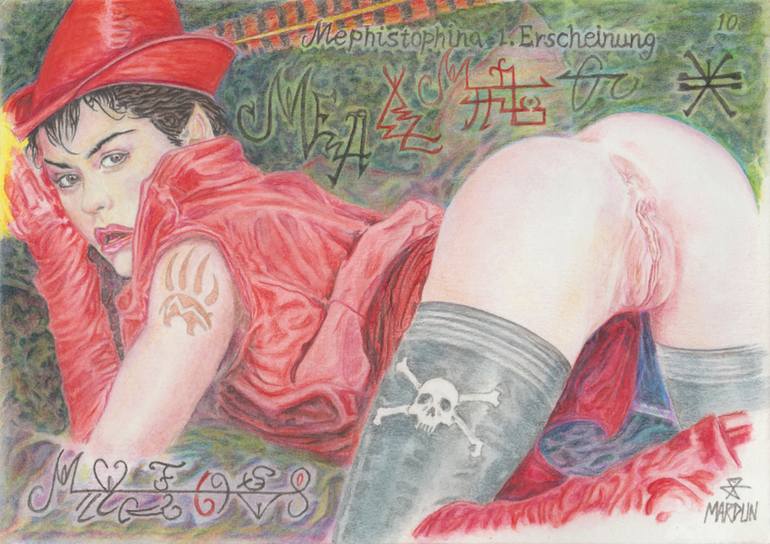


3399 Views
3
View In My Room
Mephistophina Anima Painting
Faustus Crow
Painting, Watercolor on Paper
Size: 11.7 W x 8.3 H x 0.1 D in
Ships in a Box
3399 Views
3
ABOUT THE ARTWORK
DETAILS AND DIMENSIONS
SHIPPING AND RETURNS
The watercolour painting is A4 in size (210 x 297 mm /8.3 x 11.7 in), which was initially drawn in Derwent and Caran Da'che watercolour pencils on 300g/m Aquafine watercolour paper, then painted, involving some burnishing. The painting is provisionally entitled: Mephistophina Anima. My Artist's n...
Year Created:
2016
Subject:
Mediums:
Mediums:
Painting, Watercolor on Paper
Rarity:
One-of-a-kind Artwork
Size:
11.7 W x 8.3 H x 0.1 D in
Ready to Hang:
Not Applicable
Frame:
Not Framed
Authenticity:
Certificate is Included
Packaging:
Ships in a Box
Delivery Cost:
Shipping is included in price.
Delivery Time:
Typically 5-7 business days for domestic shipments, 10-14 business days for international shipments.
Returns:
Free returns within 14 days of delivery. Visit our help section for more information.
Handling:
Ships in a box. Artists are responsible for packaging and adhering to Saatchi Art’s packaging guidelines.
Ships From:
United Kingdom.
Customs:
Shipments from United Kingdom may experience delays due to country's regulations for exporting valuable artworks.
Need more information?
Need more information?
Mardun is principally a Surrealist Artist, whose author's name is Faustus Crow; but both art and writing alchemically merge of a sacred wedding. Mardun has an experiential interest in lucid dreaming, which of a neurological phenomenon has inspired artists and authors throughout the ages, from whose creations since the time of the painted cave wall of a Shaman have sprung insights into the nature of reality, which became ensuing mystical traditions, such as the occultism of Aleister Crowley to that of the Surrealist 'fantasy fiction' of H.P Lovecraft. Mardun does not see a division between the practices of art and magic; for both practices deal with symbolism, which is the subconscious language form of surrealist dreams and of your fantastic Imagination, which also inspires your culture.
Why Saatchi Art?
Thousands of
5-Star Reviews
We deliver world-class customer service to all of our art buyers.
Global Selection of Original Art
Explore an unparalleled artwork selection from around the world.
Satisfaction Guaranteed
Our 14-day satisfaction guarantee allows you to buy with confidence.
Support Emerging Artists
We pay our artists more on every sale than other galleries.
